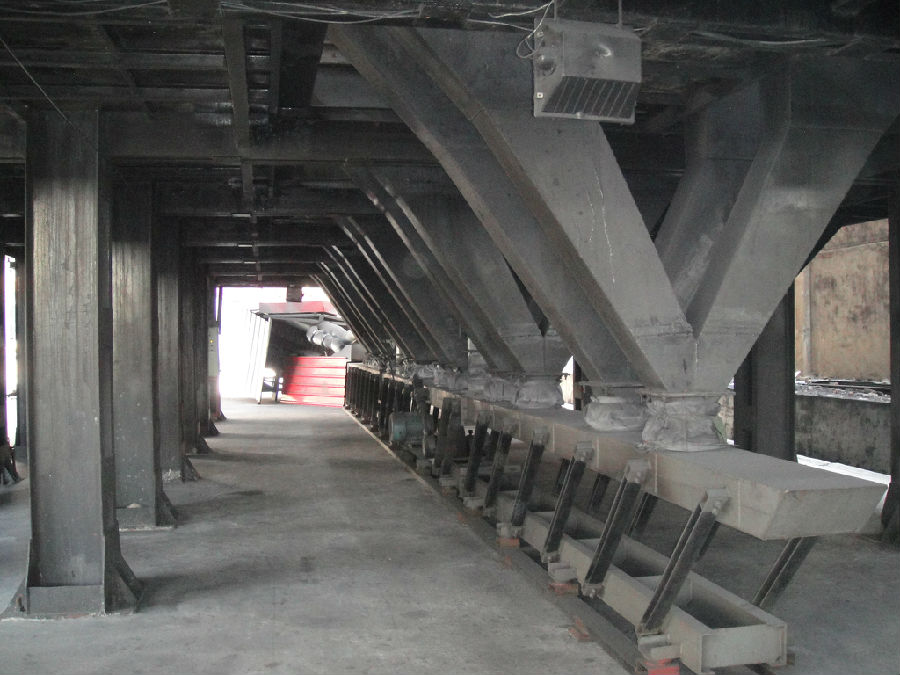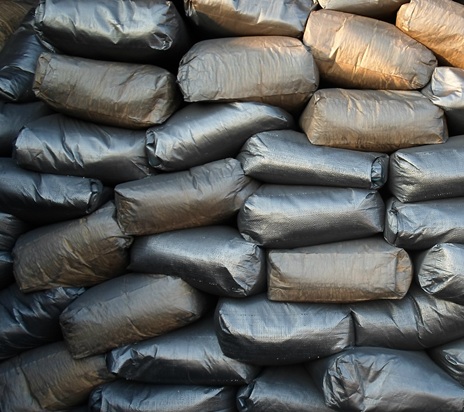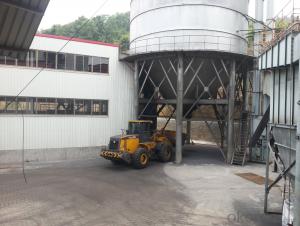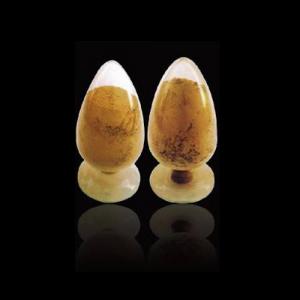Calcined Petroleum Coke As Carbon Raiser
- Loading Port:
- Shekou
- Payment Terms:
- TT OR LC
- Min Order Qty:
- 20 m.t
- Supply Capability:
- 1000 m.t/month
OKorder Service Pledge
OKorder Financial Service
You Might Also Like
Factory Background
The factory is majorly running and operating carbon additive (pitch coke, calcined petroleum coke and anthracite), low nitrogen carbon additive, and brake pad making material. Company is the long term supplier of Sinosteel Corporation, Shanghai Carbon Corporation, the plant of SGL Group the Carbon Company in China and some largest special carbon products producing plants.
YUAI also supplies huge amout of high quality carbon additive and graphite carbon additive to steel plants, foundries and ferrotungsten plants. YUAI has been assigned by BAO STEEL as the only organization for processing pitch coke for export purpose. The group’s major products are constantly exported to Japan, Korea, Malaysia, South East Asia countries, Europe and America, which receive praises by our consumers.
The group has invested numbers of calcinators in Anhui China to ensure the capability of producing and processing huge amount of carbon additive. Further investment is on process. According to the orders from customers, YUAI is able to processing and providing different specifications of carbon additive and other products. To provide best quality of products and to offer customers most satisfied service is YUAI’s operating objectives.
Calcined Petroleum Coke
FC:98.5%min,
S:0.5%max
A:0.8%max
V:0.7%max
Mositure:0.5%max
Size:1-5mm
This product is mainly used in steel-making and foundry. Calcined Petroleum Coke
Calcined Petroleum Coke comes from delayed coke which extracted from oil refinery. Although Calcined Petroleum Coke contains a little bit higher level of sulfur and nitrogen than pitch coke, the price advantage still makes it widely used during steel-making and founding as a kind of carbon additive/carburant.
Technology:
Laborary Equpment
In our lab,we has a high precision balance,mullfe furnace,sample making machine, dring box,sulfur measurement instrument and other calibratiing equipments.As a result,before deliverung to our customers,our products have to pass a strict test to ensure the quality and components.The testing reports will be sent to our customers to confirm untill they satisfy with it.
Packaging & Delivery
Packaging Detail:25kg paper bag into 1t weaving bag 5kg, 10kg and 20kg weaving bag into 1t weaving bag 25kg weaving bag put on pallet covered with entanglement wrap product direct into packing bag 25kg paper bag put on pallet covered with entanglement Wrap 25kg weaving bag into 1t weaving bag.
Delivery Details: 7 days


- Q:What are the key characteristics of monolithic refractories for electric arc furnace applications?
- The key characteristics of monolithic refractories for electric arc furnace applications include excellent thermal shock resistance, high erosion and corrosion resistance, good mechanical strength, and the ability to withstand high temperatures and aggressive chemical environments. Monolithic refractories also offer easy installation and maintenance due to their shape versatility and ability to be cast or gunned into place, ensuring optimal performance and longevity in electric arc furnace operations.
- Q:What are the specific requirements of monolithic refractories for continuous casting applications?
- The specific requirements of monolithic refractories for continuous casting applications include high thermal shock resistance, excellent erosion resistance, good thermal conductivity, low shrinkage, and high refractoriness. These refractories must also have good flowability and workability to ensure easy installation and maintenance. Additionally, they should have a high degree of chemical stability to withstand the harsh conditions of molten metal and slag in continuous casting processes.
- Q:What are the typical applications of monolithic refractories in blast furnaces?
- Due to their unique properties and applications, monolithic refractories find extensive use in blast furnaces. These refractories consist of a single, uniform material that can be shaped and installed in various forms without the need for joints or seams. This particular characteristic makes them highly suitable for lining and safeguarding the different zones of a blast furnace. One common use of monolithic refractories in blast furnaces is for lining the hearth, which is the lowermost part of the furnace where molten iron and slag collect. Monolithic refractories are employed to create a sturdy and heat-resistant lining capable of withstanding the extreme temperatures and chemical reactions that occur in this region. Another frequent application is the lining of the bosh, the transitional zone between the hearth and the blast furnace's stack. The bosh is subjected to elevated temperatures and mechanical stresses resulting from the movement of burden materials. To ensure its longevity and efficiency, monolithic refractories with high thermal shock resistance and abrasion resistance are utilized. Monolithic refractories are also utilized for lining the stack and the tuyere area. The stack refers to the vertical portion of the furnace where iron ore reduction takes place, while the tuyere area is where hot air blast is injected into the furnace. Both these areas necessitate refractories capable of withstanding high temperatures, chemical reactions, and mechanical stresses. Moreover, monolithic refractories find application in the repair and maintenance of blast furnaces. Due to the harsh conditions inside the furnace, the lining may deteriorate over time. Monolithic refractories can be easily applied as patching materials to restore the lining's integrity and extend the furnace's lifespan. In summary, monolithic refractories play a crucial role in blast furnaces by lining the hearth, bosh, stack, and tuyere area, as well as facilitating repairs and maintenance. These refractories offer exceptional thermal shock resistance, abrasion resistance, and durability, making them indispensable for the efficient operation of blast furnaces in the iron and steel industry.
- Q:What are the specific requirements of monolithic refractories for soaking pit applications?
- Monolithic refractories for soaking pit applications must meet several specific requirements. Firstly, they need to withstand high temperatures and thermal cycling. This means they must be able to endure temperatures exceeding 1500 degrees Celsius without significant degradation. The longevity and durability of the refractories depend on this capability. Secondly, the refractories must have good thermal shock resistance. Since soaking pits often experience rapid changes in temperature, the refractories must be able to handle these fluctuations without cracking or spalling. This is vital to maintain the refractories' integrity. Chemical attacks are another concern in soaking pit applications. Molten metal, slag, and other corrosive substances are present, so the refractories must have excellent chemical resistance. This prevents erosion and chemical reactions. Withstanding the corrosive effects of molten metal and slag, as well as potential chemical reactions, is crucial. Furthermore, mechanical stresses, such as abrasion and impact, occur in soaking pits due to the movement and handling of metal ingots. The monolithic refractories should possess good mechanical strength and abrasion resistance to withstand these stresses. They should be able to resist wear and tear caused by heavy loads and avoid any mechanical failure. Lastly, the refractories used in soaking pits should be easy to work with and install. This ensures efficient and effective lining of the pit, minimizing any gaps or cracks that could lead to heat loss or chemical penetration. In summary, monolithic refractories for soaking pit applications must meet specific requirements regarding high temperature resistance, thermal shock resistance, chemical resistance, mechanical strength, and ease of installation. Fulfilling these requirements guarantees that the refractories can withstand the harsh conditions of soaking pits and maintain their performance and integrity over an extended period.
- Q:How do monolithic refractories contribute to the overall efficiency of ladle cleaning operations?
- Monolithic refractories contribute to the overall efficiency of ladle cleaning operations by providing a durable and heat-resistant lining that can withstand high temperatures and chemical reactions. This lining helps to prevent the erosion and corrosion of the ladle, ensuring its longevity and reducing the need for frequent repairs or replacement. Additionally, monolithic refractories offer excellent thermal insulation, which helps to maintain the desired temperature of the ladle's contents and minimize heat loss. This ultimately improves the ladle's efficiency and reduces energy consumption during ladle cleaning operations.
- Q:What are the common failure modes of monolithic refractories in iron and steel applications?
- Monolithic refractories are widely used in iron and steel applications due to their excellent thermal shock resistance, high temperature stability, and mechanical strength. However, like any other material, they are not immune to failure. There are several common failure modes associated with monolithic refractories in iron and steel applications. 1. Spalling: Spalling is one of the most common failure modes of monolithic refractories. It refers to the detachment of refractory material from the surface due to thermal cycling, mechanical stress, or chemical reactions. Spalling can occur due to mismatched thermal expansion coefficients between the refractory and the surrounding structure, leading to cracking and subsequent detachment. 2. Erosion: Erosion is another prevalent failure mode in iron and steel applications. It occurs when the refractory material is subjected to the erosive action of molten metal, slag, or gases. The erosion can be a result of the physical impact of the flowing metal or the chemical attack by corrosive slag components. Erosion leads to the loss of refractory material, decreased lining thickness, and compromised performance. 3. Corrosion: Corrosion is a significant failure mode in iron and steel applications, particularly in contact with aggressive atmospheres or molten metal. Corrosion can result from chemical reactions between the refractory material and the corrosive agents, such as oxides, sulfides, or alkalis present in the environment. It leads to the formation of corrosion products, which can weaken the refractory lining and reduce its lifespan. 4. Thermal shock: Monolithic refractories are exposed to extreme temperature fluctuations in iron and steel applications. Rapid heating or cooling can lead to thermal shock, causing cracking and failure of the refractory material. Thermal shock can occur due to uneven heating or cooling, sudden changes in temperature, or thermal gradients within the refractory lining. 5. Abrasion: In certain iron and steel applications, monolithic refractories can be subjected to abrasive wear. This occurs when the refractory lining comes into contact with solid particles, such as metallic oxides, slags, or raw materials. The repeated impact and rubbing action of these particles can cause erosion and abrasion of the refractory material, leading to its failure. To mitigate these failure modes, proper refractory selection, installation techniques, and maintenance practices are crucial. Regular inspection, repair of damaged areas, and application of protective coatings can help extend the lifespan and performance of monolithic refractories in iron and steel applications.
- Q:What are the specific requirements of monolithic refractories for ladle transfer applications?
- Monolithic refractories used in ladle transfer applications have specific requirements to ensure their effectiveness and durability. These requirements are essential for maintaining the integrity of the ladle lining and preventing any issues during the transfer process. Firstly, monolithic refractories for ladle transfer applications must have excellent thermal shock resistance. Ladles are subjected to extreme temperature changes during the transfer process, and the refractories must be able to withstand rapid heating and cooling without cracking or spalling. This property helps to prevent any damage to the lining and maintains the structural integrity of the ladle. Secondly, ladle transfer applications require monolithic refractories with high resistance to chemical attack. Ladles often come into contact with various molten metals and slag, which can have corrosive properties. The refractories must be able to withstand these corrosive environments and maintain their physical and chemical properties over time. Another important requirement is good mechanical strength. Ladles can experience significant mechanical stress during the transfer process, including impacts and vibrations. Therefore, the monolithic refractories need to have sufficient strength to resist these mechanical forces and prevent any cracking or failure in the lining. Furthermore, ladle transfer applications often involve the use of fluxes and additives, which can have different physical properties. The refractories used must have compatibility with these fluxes and additives to ensure proper performance and avoid any adverse reactions that could affect the ladle's lining. Lastly, monolithic refractories for ladle transfer applications should have low porosity. Low porosity helps to minimize the penetration of molten metal and slag into the refractory lining, reducing the risk of erosion and extending the service life of the refractories. In summary, the specific requirements of monolithic refractories for ladle transfer applications include excellent thermal shock resistance, high resistance to chemical attack, good mechanical strength, compatibility with fluxes and additives, and low porosity. By meeting these requirements, the refractories can effectively withstand the harsh conditions of ladle transfer and ensure the longevity and performance of the ladle lining.
- Q:How do monolithic refractories resist erosion from molten metals and slags?
- Monolithic refractories, characterized by their ability to withstand erosion caused by molten metals and slags, are constructed using premium materials such as alumina, magnesia, and silica. These materials possess exceptional resistance to elevated temperatures and chemical attacks, enabling them to endure the corrosive nature of molten metals and slags. The dense composition of monolithic refractories prevents the infiltration of molten metals and slags. The compact structure acts as a physical barrier, restricting the contact between the refractory material and the molten substances. Moreover, monolithic refractories can be fortified with additives or binders that enhance their erosion resistance. These additives, such as silicon carbide, graphite, or other strengthening agents, provide additional durability and erosion resistance. Additionally, monolithic refractories can be customized with specific shapes and features to minimize erosion. For instance, the refractory lining in furnaces can be designed with curved contours or baffles to redirect the flow of molten metals and slags, reducing their impact on the refractory surface. Ultimately, the combination of top-quality materials, compact structure, additives, and tailored designs empowers monolithic refractories to effectively combat erosion caused by molten metals and slags. This resistance ensures the long-lasting and resilient performance of refractory linings in industrial settings where high temperatures and corrosive environments prevail.
- Q:What are the recent developments in monolithic refractories for the iron and steel industry?
- Recent developments in monolithic refractories for the iron and steel industry include advancements in material composition, manufacturing techniques, and application methods. These developments have led to improved refractory performance, enhanced durability, and increased energy efficiency. Some notable developments include the use of new raw materials, such as nano-sized additives and ultra-high temperature-resistant binders, which enhance the refractory's resistance to thermal shock and corrosion. Additionally, advancements in manufacturing techniques, such as advanced mixing technologies and precise curing processes, have resulted in more homogenous and consistent refractory structures. Furthermore, there have been innovations in application methods, including the use of robotic systems for precise and efficient installation, leading to reduced downtime and increased productivity in the iron and steel industry. Overall, these recent developments in monolithic refractories have significantly contributed to the optimization of iron and steel production processes.
- Q:What are the factors affecting the thermal expansion of monolithic refractories?
- There are several factors that influence the thermal expansion of monolithic refractories. 1. Chemical Composition: The chemical composition of the refractory material plays a significant role in its thermal expansion. Different chemical elements and compounds have different coefficients of thermal expansion. For example, materials containing high levels of silica tend to have lower coefficients of thermal expansion compared to materials with higher concentrations of alumina. 2. Particle Size: The particle size distribution of the refractory material can affect its thermal expansion. Smaller particle sizes tend to result in higher thermal expansion due to increased surface area and greater contact between particles. 3. Temperature: The temperature at which the monolithic refractory is exposed can greatly impact its thermal expansion. As the temperature increases, the kinetic energy of the particles increases, causing them to move more vigorously and expand. Different refractory materials have different temperature ranges at which they exhibit significant expansion. 4. Thermal History: The thermal history of the refractory material, including its heating and cooling cycles, can influence its thermal expansion behavior. Repeated heating and cooling cycles can induce microstructural changes in the material, affecting its thermal expansion properties. 5. Porosity: The porosity of the monolithic refractory can affect its thermal expansion. Higher porosity generally leads to higher thermal expansion due to the presence of voids and gaps within the material. 6. Binder Content: Monolithic refractories often contain binders that hold the particles together. The type and amount of binder used can impact the thermal expansion of the refractory. Different binders have different coefficients of thermal expansion, which can influence the overall expansion behavior of the material. 7. Thermal Shock: Rapid temperature changes, such as during quenching or exposure to alternating heating and cooling, can cause thermal shock in the refractory material. This can lead to cracks, spalling, and changes in the thermal expansion behavior. Understanding these factors is crucial in selecting the appropriate monolithic refractory material for specific applications, as the thermal expansion characteristics can directly impact the performance and longevity of the refractory in high-temperature environments.
1. Manufacturer Overview |
|
|---|---|
| Location | |
| Year Established | |
| Annual Output Value | |
| Main Markets | |
| Company Certifications | |
2. Manufacturer Certificates |
|
|---|---|
| a) Certification Name | |
| Range | |
| Reference | |
| Validity Period | |
3. Manufacturer Capability |
|
|---|---|
| a)Trade Capacity | |
| Nearest Port | |
| Export Percentage | |
| No.of Employees in Trade Department | |
| Language Spoken: | |
| b)Factory Information | |
| Factory Size: | |
| No. of Production Lines | |
| Contract Manufacturing | |
| Product Price Range | |
Send your message to us
Calcined Petroleum Coke As Carbon Raiser
- Loading Port:
- Shekou
- Payment Terms:
- TT OR LC
- Min Order Qty:
- 20 m.t
- Supply Capability:
- 1000 m.t/month
OKorder Service Pledge
OKorder Financial Service
Similar products
New products
Hot products
Related keywords

























